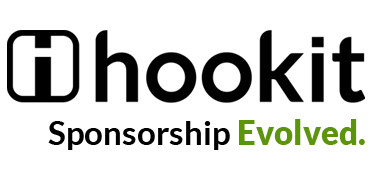The 2019 FIFA Women’s World Cup was seen by 14 million viewers in the USA on television, outperforming last year’s men’s World Cup final by more than 20 percent. Based on Hookit data, however, profiles for men’s World Cup teams and athletes saw upwards of 900% more interactions during their tournament in 2018 than the women’s teams and athletes saw during their tournament (776.8M interactions vs 76M interactions). Regardless, as the women’s tournament gained more viewers, so did the teams and their athletes who saw a rise in their social media interactions as the tournament progressed.

The top 5 teams that generated the most interactions between June 7th (the beginning of the tournament) and July 7th (the end of the tournament) were the USA, followed by Brazil, the Netherlands, England, and Italy. With the exception of Brazil, these teams were also the teams that posted the most during the tournament; Italy made the most posts of any team with a total of 1,076 posts during the tournament, 25% of which were video; England was next with 700 posts, 21% of which were video; the Netherlands followed closely behind with 665 posts, 23% of which were video; the US had 571 posts, 20% of which were video; finally, Germany came in with 565 posts, only 14% of which were video. Surprisingly, although Brazil ranked second in terms of interactions, they were second to last of any team with regard to number of posts – they only had 75. Brazil was likely able to secure its second-place slot as a result of their high follower count; with 995K followers, they beat out every other team by at least 470K followers, and the only other team that had more followers than Brazil was team USA with 4.0M followers. With this data, it is apparent that accounts foster more interactions by posting more and by having around 20% of their posts be videos.

As the team with the most interactions, the US women follow suit by capturing an impressive number of interactions. Their three players with the most interactions during the World Cup were Alex Morgan with 16.5M interactions, followed by Megan Rapinoe with 5.2M interactions, and Ali Krieger with 1.3M interactions. These players also amassed a new following, with Morgan acquiring 2.2M new followers, Rapinoe receiving 981K new followers, and Krieger gaining an additional 172K followers. Compared to players on the other top 4 teams, Morgan and Rapinoe maintain their first- and second-place slots; Krieger is beaten out for third-place by two players from Brazil: Cristiane Rozeira de Souza and Marta Viera da Silva. Over the course of the tournament, Cristiane had almost 4M interactions and gained 757K new followers while Marta gathered 3.8M interactions and acquired 1.2M new followers – a new follower count that was second only to Alex Morgan. The players with the top interactions typically had posts not only of them playing their sport, but also of personal photos like a #throwbackthursday and various sponsored videos.
As more brands begin to give themselves a voice through avenues such as team and league sponsorships, there is a need to know the data behind their sponsorships and whether they are being effectively promoted by their partners. The right metrics and insights can help sponsor brands understand which of their sponsored properties are most effective and drive higher ROI. Sponsor brands can gain this competitive advantage by leveraging the Hookit platform to make effective sponsorship decisions and strategy.

Written by Hayley Pogue
Hayley is a rising senior and NCAA Div. 1 athlete at Bucknell University working towards a Bachelor of Science in Business Administration (BSBA) in Markets, Innovation, and Design. Her major deals with innovative product development, while her concentration in consumer analytics focuses on data’s role in the consumer experience. She has joined the Hookit team as a content marketing intern for the summer of 2019. To learn more about or connect with Hayley, please visit her LinkedIn.


